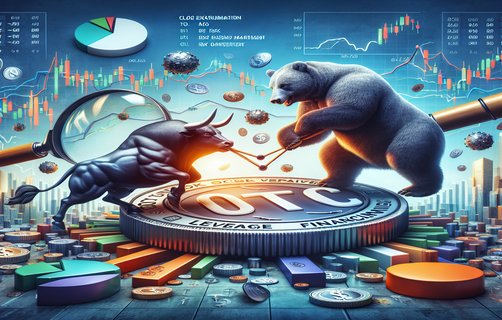探索盈利之路:如何在免费配资炒股中稳定前行
Imagine this: you’re standing at the edge of a vast ocean, the waves crashing at your feet. As an investor, this ocean represents the stock market - unpredictable and powerful. How do you navigate these waters safely? That’s where the concept of ‘免费配资炒股’ comes in, sparking a debate that stretches beyond basic trading strategies into the philosophy of balance between risk and reward.
Imagine if you could see signals that tell you when to dive in and when to stay back. Investing signals are your lifeguards in the turbulent sea of stock markets. They help you identify key moments that may signify potential gains. According to an article in the Journal of Financial Markets, effective investment signals can significantly reduce uncertainty, thereby making investment decisions clearer and more manageable. However, what good are these signals without a stable platform to support your endeavors?
Platform stability is like the sturdy lifeboat that keeps you afloat when the waves get rough. Many investors gravitate toward well-established platforms that not only promise great features but also secure their funds. Reports indicate that over 60% of investors cite platform stability as a primary factor in their decision-making process. After all, your funds deserve a fortress-like protection while you brave the financial seas.
But let's be realistic: any investment comes with risks. Striking the right balance between profit-making and safeguarding your capital is crucial. The key is understanding the risk you are willing to take versus the potential rewards. Forbes highlighted that a well-calibrated risk-reward ratio could be your compass—a guide to keep you on the right course.

Funds need to be utilized efficiently, especially when leveraging is involved in配资炒股. Allocating capital into highly-performing stocks while keeping a reserve for unforeseen market fluctuations is akin to maintaining a life vest while swimming - you know, just in case.
As you brave the currents of market trends, strong observation becomes your best ally. Do you watch how the tides shift with economic indicators or geopolitical events? An article from The Economist suggests that keeping an eye on these trends not only enhances your trading strategy but also builds a stronger intuition about market movements.

Yet, even the most seasoned sailors need to optimize their navigation systems, particularly when it comes to managing trading decisions. Implementing automation tools and algorithms can lead to a more disciplined approach, reducing emotional decision-making that often leads to mistakes. Research from the Financial Analyst Journal points out that traders using automated systems tend to see better performance due to reduced human error.
So, as we sail together through this ocean of opportunities, remember this: seek out the right signals, ensure your platform is stable, maintain a responsible balance between risk and return, and never underestimate the power of observation and technology in enhancing your trading decisions.
Now, here are some questions for you: What’s the key factor for you in choosing a trading platform? Do you rely more on instinct or data for making trading decisions? Are you willing to take risks for potentially higher rewards? Let’s hear your thoughts!
